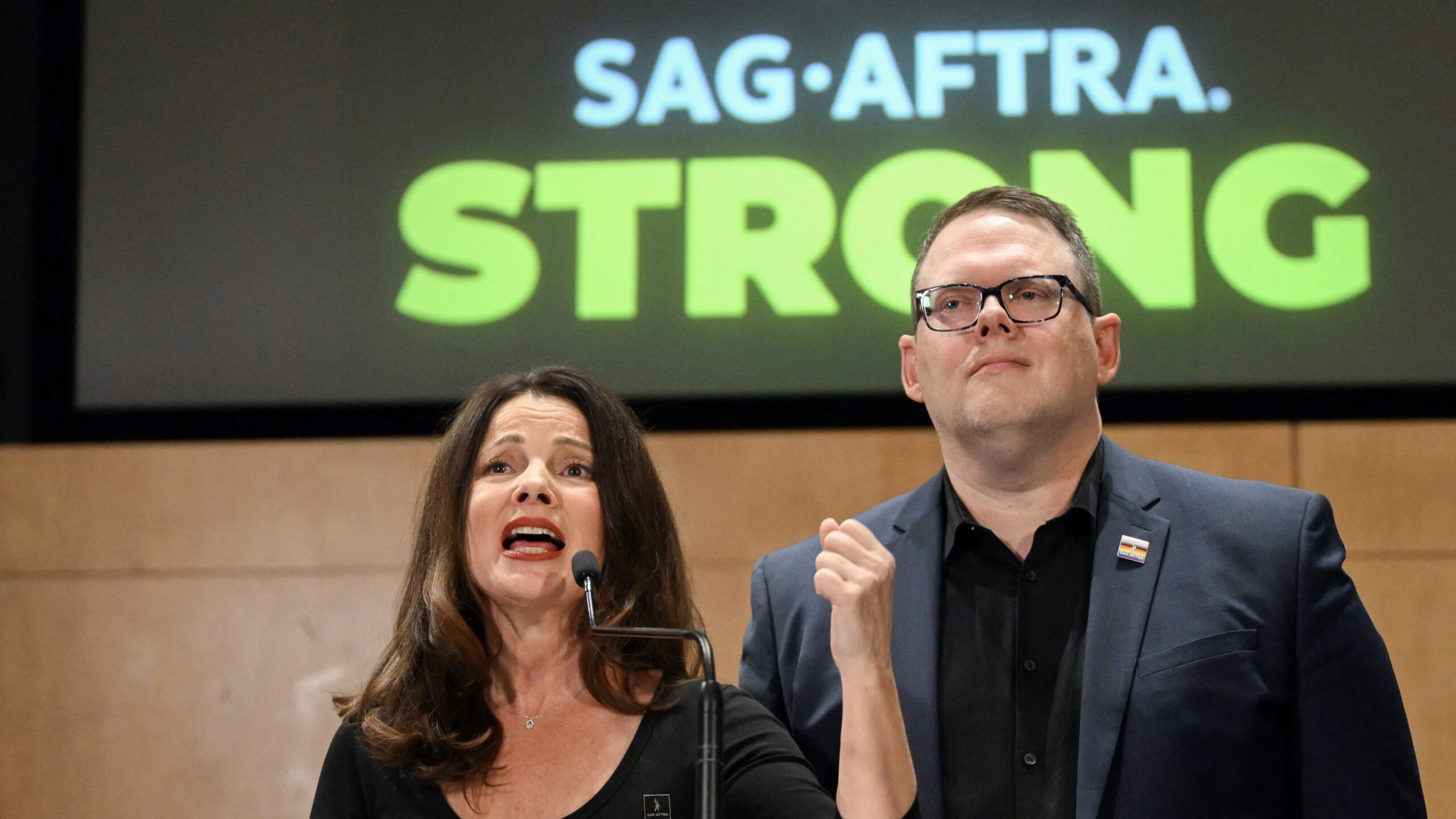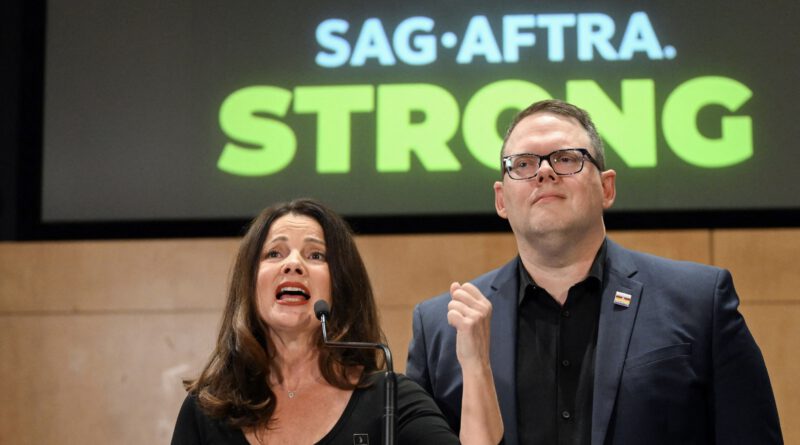Actors are concerned about AI terms in new SAG-AFTRA contract

The Screen Actors Guild – American Federation of Television and Radio Artists (SAG-AFTRA) strike may be over, but concerns about artificial intelligence regulations in the union’s new contract with the Alliance of Motion Picture and Television Producers (AMPTP) have given actors pause.
SAG-AFTRA members are currently voting to ratify the new contract, with the vote ending Dec. 5. Union leadership has released an 18-page summary of the agreement as it stands, which lays out elements of the deal including protections around artificial intelligence. However, for some union members, these proposed protections are too vague to offer any real sense of security.
What does the new SAG-AFTRA deal have to say about AI?
The tentative SAG-AFTRA contract accepts AI acting as an inevitability. After all, Hollywood studios have already been making body scans of background actors. Things like body scans are among the practices SAG-AFTRA was fighting to curb and better regulate with their 118-day strike.
The deal outlines two types of digital replicas that studios can make of performers: Employment-Based Digital Replicas (EBDRs), and Independently-Created Digital Replicas (ICDRs). EBDRs are created “with the performer’s physical participation” on a specific project, while ICDRs are made from existing material, without the performer’s physical involvement. Actors would be compensated for the creation and use of these replicas, although rates vary based on the kind of replica or if an actor is employed under Schedule F, meaning they are paid a large lump sum for a project.
Consent from the actor is required for both forms of digital replica, with the contract stipulating that said consent continues after an actor’s death unless specifically stated otherwise. However, there are some exceptions to the consent regulations for both EBDRs and ICDRs. According to the contract summary, the use of an EBDR does not require consent if “the photography or soundtrack remains substantially as scripted, performed and/or recorded,” which is more up to the studios’ discretion. Studios would not need consent from actors to use ICDRs in projects that “would be protected by the First Amendment,” which include uses like scholarship, satire or parody, or historical or biographical work.
The contract also lays out a third type of digital performer: Synthetic Performers created by Generative AI. These are intended to create an entirely new performer, one who is unrecognizable and will not share a role with a “natural performer.” If the name of a human actor is used in the creation of a Synthetic Performer, resulting in a recognizable and prominent facial feature, producers will have to bargain with and obtain consent from the actor.
What about these AI uses have actors concerned?
Several union members have spoken out about the AI terms described in the contract summary. Among them is filmmaker Justine Bateman, who is a former SAG-AFTRA board member and negotiating committee member. In a thread on X (formerly known as Twitter), Bateman laid out concerns with the language of the contract.
Among these concerns is the fact that Schedule F actors may not be paid for their EBDR’s use in sequels and that there is no minimum compensation for the use of ICDRs, meaning actors will have to negotiate their own compensation. The exemptions for requiring consent are also troublingly vague, as studios can decide what does and doesn’t count as “substantially as scripted.” Studios also do not need to gain consent for adjusting certain elements of a performance like “lip and/or other facial or body movement and/or the voice of the performer to a foreign language.” Even if a digital replica is used without consent, the contract does not state that studios will have to change or amend the footage. Actors can only seek monetary damages.
SAG-AFTRA President Fran Drescher pushed back on critics of the contract. Without naming names, she labeled them “naysayers” and “contrarians.” Duncan Crabtree-Ireland, the union’s chief negotiator, said in an interview with Variety that he had talked to Bateman about AI. “Justine is justly cautious about the future,” he told Variety. But according to him, the AI terms were “the most that could be achieved with a 118-day strike.”
However, Bateman is far from the only critic of SAG-AFTRA’s proposed deal. Many members are concerned that they will not get to read the entire contract before the ratification vote is up. As Crabtree-Ireland told Krystie Lee Yandoli and Kalia Richardson of Rolling Stone, SAG-AFTRA has never had a Memorandum of Agreement done in time for ratification before, but that they are “pushing to try and get that done this time.”
Union member Satu Runa also told Rolling Stone that she worried about studios “resurrect[ing] deceased performers on screen.” If a deceased performer did not give their consent during their lifetime, filmmakers can still ask an estate or representative.
Even the contract’s approach to consent gives actors room for pause. If an actor does not give consent for their likeness to be replicated, studios can simply employ someone else who will give their consent. So is that consent, or is it coercion?
“It’s only those with considerable leverage that will have the ability to say no to the replication, but still be hired,” Shaan Sharma, an alternate member of the SAG-AFTRA negotiating committee, told Rolling Stone. “That really concerns me because most members don’t have the leverage to say no at the time of engagement.” What kinds of protections would be in place for actors with less leverage, such as background performers?
Finally, there are major worries about the possibility of Synthetic Performers replacing actors. (The contract summary does state: “Parties acknowledge the importance of human performance in motion pictures and the potential impact on employment.”) Bateman wrote in her thread that the presence of Synthetic Performers in the contract feels like SAG-AFTRA giving studios permission to replace human actors, or to use non-union actors.
“To me, this inclusion is an anathema to a union contract at all,” Bateman wrote.
She also drew attention to the fact that the use of digital doubles may lessen the need for other Hollywood crew members, including members of the International Alliance of Theatrical Stage Employees (IATSE) and Teamsters.
That last point is especially important because while SAG-AFTRA may be reckoning most publicly with AI right now, the use of AI in the workplace is not just a SAG issue. It’s an overall labor issue, with every new contract containing AI terms setting a precedent for workers in other industries.

